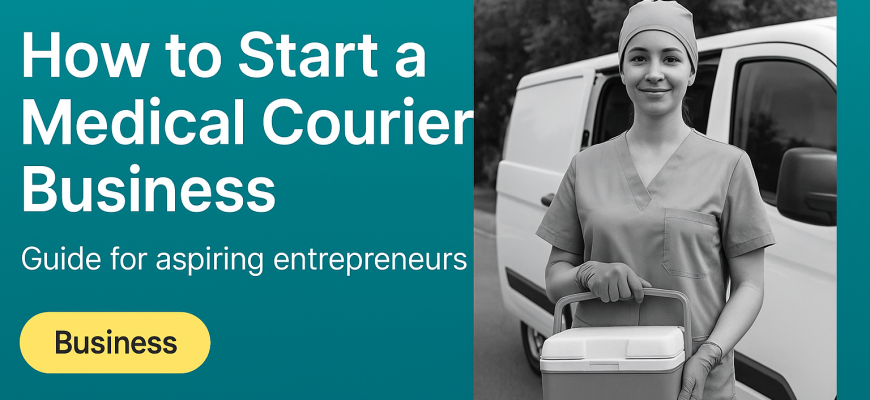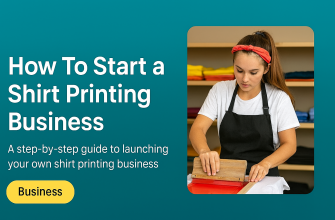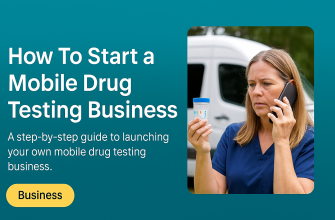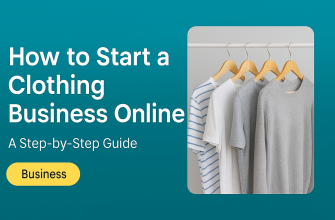Turning your drive to help others into a thriving business is absolutely possible – and the medical courier field is a prime opportunity to do just that. In fact, the global medical delivery market was worth over $69 billion in 2023 and is growing around 9% annually, signaling strong demand for these services. What’s more, unlike many healthcare careers, you don’t need an advanced degree or massive capital to get started – a reliable vehicle, basic training, and a solid plan can suffice. If you’ve ever imagined running a business where you play a critical role in patient care (say, ensuring a lab sample or medication reaches its destination on time), you’re in the right place. As a business coach who has guided many entrepreneurs, I’m here to tell you: you can launch a medical courier service with the right steps, mindset, and commitment.
In this guide, we’ll break down essential steps to start your own medical courier business – from defining your services and meeting legal requirements to getting your first clients and planning for growth.
- Identify Your Services and Niche
- Understand Legal Requirements and Regulations
- Meet Licensing and Certification Needs
- Secure Proper Insurance Coverage
- Calculate Startup Costs and Plan Your Finances
- Set Up Your Fleet and Equipment
- Streamline Your Operations and Logistics
- Acquire Clients and Grow Your Customer Base
- Plan for Growth and Long-Term Success
- Empowering Your Journey Ahead
Identify Your Services and Niche
The first step is to clarify exactly what services your medical courier business will offer. Medical couriers handle a range of critical items that often require special care and urgency. For example, a medical courier might carry:
-
Lab specimens and test samples – such as blood vials, urine samples, or biopsies that need quick, secure transport to laboratories.
-
Prescription drugs and pharmaceuticals – delivering medications from pharmacies to patients’ homes or clinics.
-
Medical equipment and supplies – from surgical instruments and oxygen tanks to PPE and replacement parts for medical devices.
-
Confidential medical documents – like patient records or test results that must be handled securely (often in compliance with privacy laws).
-
Donor organs or blood products – in some cases, specialized couriers transport life-saving organs or blood between hospitals (this requires extreme speed and care).
Think about which of these categories you want to focus on. You might start broad, or you might carve out a niche (for instance, specializing in laboratory specimen pickups only, or focusing on delivering prescription medications to nursing homes). Identifying your niche helps you tailor your operations and marketing. It also informs what equipment and training you’ll need.
Just as important is knowing who your clients will be. Medical couriers typically serve hospitals, clinics, laboratories, pharmacies, nursing homes, private practices (like doctors’ or dentists’ offices), and even individual patients receiving care at home. Each client type has unique needs – for example, a hospital may require 24/7 on-call service for emergencies, while a clinic might have scheduled daily pickups. By understanding what you’ll transport and who you’ll serve, you set a clear direction for your business from day one.
Understand Legal Requirements and Regulations
Operating in the medical field means compliance is non-negotiable. Healthcare logistics are heavily regulated to protect patient privacy and safety. Make it a priority to educate yourself on the laws and guidelines that apply to medical deliveries in your region.
For example, in the United States, a medical courier business must follow rules from agencies like HIPAA (for patient information privacy), OSHA (for workplace and biohazard safety), and the Department of Transportation (DOT) (for transport safety). These regulations cover things such as:
-
Health Information Privacy (HIPAA): You and your staff must handle any documents or packages containing personal health information with confidentiality and care. This might involve training on proper documentation handling and having secure processes for things like lab results or medical records.
-
Biohazard and Safety Standards (OSHA): If you transport biological specimens (blood, urine, etc.), you’ll need to follow OSHA’s Bloodborne Pathogen standards for safe handling. This means using protective gear (gloves, etc.), proper packaging (leak-proof containers, biohazard labels), and protocols for spills or exposure.
-
Transportation and Handling Laws: Ensure compliance with any transportation rules for medical materials. For instance, the FMCSA (Federal Motor Carrier Safety Administration) sets safety requirements for commercial transport vehicles in the U.S.. Some states or countries have additional Department of Transportation rules, especially if you carry hazardous materials (like oxygen or certain lab chemicals) or if your vehicle is above a certain weight. Always check local regulations for any special permits or driver qualifications needed for transporting medical items.
Tip: Consider pursuing relevant certifications or training programs for medical couriers. There are online courses covering HIPAA compliance, OSHA safety, biohazard handling, and medical courier best practices. While not always legally required, having these certifications can boost your credibility and ensure you’re up-to-date on how to operate safely. It shows potential clients that you run a professional, compliant service – which can be a deciding factor when they choose a courier.
Staying on top of the legal requirements might sound daunting, but it’s truly manageable. Build it into your plan from the start. Create checklists for compliance, keep documentation of any training or certifications, and perhaps consult with a healthcare attorney or compliance specialist if you’re unsure about certain rules. Being diligent here protects your business and your clients, and it sets you apart as a trustworthy provider.
Meet Licensing and Certification Needs
In parallel with understanding regulations, you’ll need to take care of the formal licenses and registrations to legally operate your business. Starting a medical courier service involves many of the same startup steps as any business, with a few extra layers due to healthcare.
Register Your Business: Decide on a business structure (e.g., sole proprietorship, LLC, or corporation) and officially register your company. Many entrepreneurs choose an LLC (Limited Liability Company) for a small courier business, as it offers liability protection for your personal assets while being relatively simple to set up. Once you’ve registered your business name and entity, obtain an Employer Identification Number (EIN) from the IRS for tax purposes. An EIN is like a social security number for your business and is needed to pay employees and file business taxes.
Business Licenses and Permits: Nearly all businesses require some form of license to operate. Check what’s needed at the federal, state, and local levels for a courier or transportation business in your area. In the U.S., for example, you may need a general business license from the city/county, and possibly a transportation or courier service permit if one is required by your state. The U.S. Small Business Administration (SBA) is a great resource for learning about federal license requirements and can point you to state-specific guides. Don’t forget to register your vehicles with the DMV and ensure your drivers have up-to-date driver’s licenses as well (a clean driving record is a must for anyone you employ).
Special Handling Licenses: Depending on your service niche, you might need additional credentials. For instance, if you plan on transporting prescription medications, some regions require couriers to have a specific authorization or to partner with a licensed pharmacy. In fact, in certain jurisdictions, drivers carrying prescription drugs may need to hold a medical or pharmaceutical license themselves unless they are working under a pharmacy’s direction. Always verify these requirements with your state’s Board of Pharmacy or equivalent authority. Similarly, if you handle biohazardous materials (like medical waste or infectious samples), look into whether a Hazmat endorsement on your driver’s license or a special permit is needed. It’s crucial to be thorough here – operating without proper licensing can lead to heavy fines or even being shut down.
Certifications: While not “licenses” per se, obtaining certifications can strengthen your business foundation. We mentioned some earlier (HIPAA, OSHA training). Additionally, you might seek certification courses specifically for medical couriers – for example, Integrity Medical Courier Training offers programs tailored to this industry. These courses teach handling of specimens, medical terminology, chain-of-custody procedures, etc. Having a certificate on the wall (and on your marketing materials) that says you and your team are certified medical couriers can reassure clients that you know your stuff.
Summary: Ensure you legitimize your business by handling all the paperwork upfront. Register your business, get your tax IDs and licenses, and take any needed exams or training. It might feel like jumping through hoops, but each step builds a legal and professional foundation that lets you operate with confidence.
Secure Proper Insurance Coverage
Insurance might not be the most exciting part of entrepreneurship, but it is absolutely essential – especially when people’s health (and potentially life-and-death deliveries) are involved. The right insurance policies protect your business financially and show clients that you take responsibility seriously.
At minimum, plan to obtain the following insurance coverages:
-
General Liability Insurance: This covers accidents or damages that could occur in the course of your work. For example, if a package you deliver leaks and causes damage, or if someone is injured due to your services, general liability insurance helps cover those costs. It’s a safety net for a broad range of mishaps.
-
Commercial Auto Insurance: A personal auto policy typically will not cover vehicles used for business deliveries. Commercial auto insurance covers your cars, vans, or bikes in case of accidents during deliveries. Given the high mileage and urgency associated with medical courier work, this is crucial. Ensure it covers vehicle damage, liability if your driver is at fault in an accident, and possibly the cargo inside.
-
Cargo or Inland Marine Insurance: You may want a policy that specifically covers the contents you’re transporting (sometimes this is included or can be added to a commercial auto policy). Medical items can be high-value or irreplaceable (think of an organ for transplant or an expensive piece of medical equipment). Cargo insurance can compensate you or the client if goods are lost, damaged, or spoiled in transit.
-
Workers’ Compensation Insurance: If you hire employees (drivers, dispatchers, etc.), most states require workers’ comp. This covers medical expenses or lost wages if an employee gets injured on the job. Even if not strictly required because you only use independent contractors, carrying some form of injury coverage or occupational accident insurance is wise – driving and lifting involve risks.
Beyond these, consider professional liability insurance (also known as Errors & Omissions insurance). This could protect you if a client claims you were negligent – for instance, if a delivery was mishandled causing a patient harm. While such cases may be rare, in the medical field the stakes are high, so some courier businesses opt for this extra layer of protection.
Insurance not only protects you; it’s also part of your brand’s trustworthiness. Many healthcare organizations will ask for proof of insurance before signing a contract with you. Having robust coverage shows you’re a professional who stands behind your service. Work with a business insurance agent who understands transportation or medical service businesses – they can help tailor policies to your needs.
Finally, remember to factor insurance premiums into your pricing structure. It’s a cost of doing business that you’ll need to cover with your revenue. The peace of mind and credibility it affords are well worth it.
Calculate Startup Costs and Plan Your Finances
One of the most common questions new entrepreneurs ask is: “How much will it cost to start?” The good news in a medical courier business is that the upfront costs can be relatively low compared to many businesses – especially if you start small and grow organically. But you’ll still need to map out your budget and ensure you have enough capital to launch and sustain the business until it becomes profitable.
Initial Expenses to Expect: These can include:
-
Business setup fees: registering your business entity, getting licenses and permits, legal fees if you consult a lawyer. These might range from a few dozen to a few hundred dollars depending on your state and how you file. (For instance, forming an LLC might cost $100–$300 in state filing fees.)
-
Training and certifications: Costs for any courses (like HIPAA/OSHA training or medical courier certification programs) you choose to invest in. Some online courses are free, while others could be a few hundred dollars.
-
Vehicle costs: If you already have a reliable vehicle that you can use for deliveries, you’re a step ahead. If not, acquiring a vehicle will be your major expense. You could start with a used car or van to keep costs down, or lease a vehicle instead of buying. For perspective, a brand-new cargo van (like a Mercedes Sprinter) can cost around $40,000+ – but many entrepreneurs begin with a second-hand van or even use their personal car initially to save money. Just ensure whatever you use is well-maintained.
-
Equipment and supplies: This includes things like insulated coolers or thermal boxes for temperature-sensitive items, a supply of ice packs, bubble wrap and packaging material for fragile items, labels (e.g. “Biohazard” or “Fragile” stickers), a reliable smartphone for your driver, perhaps a printer for labels or receipts, and basic safety gear (gloves, mask, first aid kit). These costs can add up, but you can start with minimal quantities and scale up as needed.
-
Insurance premiums: As discussed, you’ll pay premiums for the insurance policies – usually upfront or in installments. Get quotes so you know this number; it could be a few hundred to a couple thousand dollars annually, depending on coverage and number of vehicles.
-
Operating cash: Money for fuel, tolls, parking, vehicle maintenance, and miscellaneous expenses. It’s wise to have a few months’ worth of operating expenses saved or accessible, since it might take some time to break even. If you plan to rent a small office or storage space, include rent and utilities in this category (though many start home-based or use a garage for storage to keep this zero at first).
Every business is different, but to give you a real-world sense: one entrepreneur reported launching their medical courier service with just about $500 in initial spending. That frugal startup covered things like forming an LLC, getting HIPAA and bloodborne pathogen certifications, a virtual business address, notary services, and some basic courier supplies. How? They likely used an existing vehicle and home office, illustrating that lean startup strategies are possible. Of course, if you need to buy a vehicle or hire help, your upfront costs will be higher.
Plan Your Funding: Once you estimate your startup costs, figure out how to fund them. There are several ways to secure financing for a small business, and you might combine more than one:
-
Personal savings: The simplest route is to use your own savings if you have enough. This keeps you free of debt. Just be sure not to deplete an emergency fund entirely – be realistic about how much you can risk.
-
Friends and Family Loans: Sometimes called “soft loans,” these are funds borrowed from people you know, often with little or no interest. If you have a supportive network, a few small loans can add up to the seed money you need. Treat it formally (with a simple written agreement) to avoid misunderstandings, and of course, pay it back as promised.
-
Bank or Credit Union Loans: Many banks offer small business loans or lines of credit. To get one, you’ll generally need a decent credit score and a solid business plan to show how you’ll make money and repay the loan. The SBA guarantees loans through banks as well, which can make banks more willing to lend to a startup. Check out SBA loan programs for small businesses – they often have favorable terms.
-
Crowdfunding: Consider launching a campaign on platforms like Kickstarter or GoFundMe to raise funds. Crowdfunding works best if you can tell a compelling story about your business (for example, how your service will benefit the community or address a critical need). People might chip in not for profit share, but as supporters backing your mission. Be sure to offer them something, even symbolic, in return – like branded merchandise or public thank-yous.
-
Angel Investors: For a larger-scale vision (say you plan to serve an entire region and need a fleet from the get-go), you might seek an angel investor. These are individuals or groups who invest money in promising businesses in exchange for equity (partial ownership) or a share of profits. It’s less common in a courier business unless you have a really novel model, but it’s an option if you have connections or a persuasive pitch.
Whichever route, keep your business plan handy – outline your expected expenses, pricing, revenue projections, and break-even point. This isn’t just for potential lenders/investors; it’s for you, too. A clear financial plan helps you price your services appropriately and know how many clients or deliveries you’ll need to cover costs. Remember, it might take a little time to turn a profit as you build a client base, so plan for that period in your budget.
Set Up Your Fleet and Equipment
With the groundwork laid, it’s time to get the practical tools of your trade in place. As a courier business, your “fleet” – even if it’s just one vehicle at first – and related equipment are the backbone of daily operations. The key is to choose vehicles and gear that fit the needs of the medical items you’ll transport, while keeping reliability and efficiency in mind.
Choose the Right Vehicle(s): For starters, use what you have if it fits – many medical couriers launch using their personal car. A fuel-efficient, reliable sedan or small SUV can carry a surprising amount of medical supplies. Just ensure it’s kept clean and well-maintained. If your niche involves larger items or high volume, you may need a van or cargo vehicle. For instance, delivering electric wheelchairs or hospital beds might require a van equipped with ramps or a lift for heavy equipment. On the other hand, if you’re mostly zipping around a dense city with small lab samples, a motorbike or bicycle could even work, bypassing traffic and cutting costs. Align your vehicle choice with your service profile. As you grow, you can diversify your fleet (a mix of cars, vans, or bikes as needed).
Outfit for Special Handling: Medical goods often have special handling requirements:
-
If you carry temperature-sensitive items (like blood samples, certain medications or vaccines), you’ll need solutions to keep them within required temperature ranges. This could be as simple as insulated cooler boxes with ice packs for short trips, or investing in a portable refrigeration unit for your vehicle for longer hauls. (Some vaccines also need protection from light, which those insulated containers provide by design.) Make sure you have a system for monitoring temperatures if applicable – even a basic min/max thermometer in a cooler can work.
-
For fragile items (like glass vials or diagnostic equipment), stock up on packaging materials: bubble wrap, foam padding, sturdy sealable containers. You might be packing these items yourself or providing packaging to a client. Either way, have the materials ready to prevent breakage.
-
Always have a spill kit if you transport biological specimens. This includes gloves, absorbent material, disinfectant, and biohazard waste bags – in case a sample leaks or breaks, you can clean it up according to safety protocols.
-
Maintain cleanliness: use disposable liners or trays in your vehicle for anything that could spill. You might dedicate a cooler or compartment of your car just for medical items, to avoid cross-contamination with personal items or food.
Essential Equipment and Supplies: Besides the vehicle and special handling gear, a few other tools will make your life easier:
-
Communications & Navigation: A smartphone (with a reliable data plan) is basically indispensable – it allows you to use GPS navigation, stay in contact with clients and dispatch, and use any courier management apps or route optimization software. Some companies also use two-way radios as backup communication between dispatch and drivers (useful in areas with spotty cell service).
-
GPS and Routing Tools: You can start with simple solutions like Google Maps or Waze for navigation. But as your delivery schedule becomes more complex, consider using route optimization software (more on this in the next section) or at least a multi-stop planner. This ensures you’re taking efficient routes and not wasting time or fuel.
-
Safety Gear & First Aid: Keep some basic safety items on hand. Disposable gloves and face masks (for handling specimens or when entering healthcare facilities), hand sanitizer, and a first aid kit for minor injuries are important. Also, if you’ll be driving long hours, simple things like a flashlight, a roadside emergency kit, and jumper cables for your vehicle are smart to carry.
-
Identification and Security: As a medical courier, you may be entering secure areas of hospitals or labs. Have a company ID badge if possible, and dress professionally (or have a casual uniform like a polo shirt with your logo). Also consider lockable storage in your vehicle – for example, a lockable box or cabinet for sensitive items, especially if you ever need to leave things in the car briefly.
Setting up your fleet and equipment is an area where you can start lean and scale up. Begin with the essentials that meet your current contracts’ needs. Over time, reinvest into better vehicles or more specialized equipment as the business demands. The bottom line: reliability is king. A breakdown or equipment failure at a critical moment can cost you a client. So whatever scale you start at, keep your vehicle serviced, your equipment clean and in good working order, and have backup supplies for anything that’s one-time use.
Streamline Your Operations and Logistics
Running a medical courier service efficiently is like conducting an orchestra – you’ve got to coordinate moving parts (literally, vehicles moving) in harmony. Logistics refers to the operational game plan: how you schedule, route, track, and manage your deliveries and team. Smooth logistics mean faster deliveries, lower costs, and happier clients. Let’s look at how you can set up smart operations even as a small business:
Optimize Route Planning: One major key to efficiency is planning the best routes for your deliveries. Medical couriers often have multiple stops (pickups and drop-offs) throughout the day, and they can be time-sensitive. Rather than winging it stop by stop, use tools or software to sequence your route in the most efficient order. Route optimization software can automatically map out the quickest route to cover all your stops, taking into account distance, traffic, and delivery time windows. By cutting down driving time and avoiding backtracking, you save fuel and time, meaning you can handle more deliveries in a day. There are many solutions out there, from dedicated platforms like Upper or eLogii to simply optimizing manually on Google Maps when you have only a few stops. As you grow, investing in a good routing program will pay off in spades (some reports show double-digit operational savings from using such tools).
Embrace Delivery Management Technology: Beyond routing, consider a delivery management app or system that helps with dispatching and tracking. Modern courier software or apps can let you track your drivers and packages in real time, provide status updates, and even allow customers to follow their delivery on a map. For example, you can scan a package with a phone to mark it picked up, and capture an electronic signature or photo as proof of delivery – all of which gets logged in the system. These tools sound high-tech, but many are designed for small businesses and are quite user-friendly (and some are very affordable or even have free tiers). The benefits are big: you’ll have digital records of everything, fewer errors, and the ability to proactively update clients if a route is delayed or a delivery is done. Even if you start solo, using such a system sets the stage for scaling smoothly.
Set Standard Operating Procedures (SOPs): Efficiency also comes from consistency. Establish clear procedures for common tasks – for example, how a driver should handle picking up a lab sample (check that it’s labeled, verify paperwork, keep it at correct temperature, log the pickup time, etc.), or what to do if a client isn’t available when you attempt a pickup/drop-off. Write these steps down and train anyone who works with you. SOPs ensure that even as you add drivers, everyone performs tasks the right way every time. This reduces mistakes and the need to micromanage. It also helps if you get sick or take a day off – a backup driver can follow the SOP and the job gets done correctly.
Plan for Contingencies: In medical delivery, delays or errors can have serious consequences, so think ahead about what if scenarios. What if your vehicle breaks down mid-route? It’s wise to have a plan, like a relationship with a rental company or a backup vehicle to use, and a protocol to inform clients immediately and perhaps hand off items to a partner driver if possible. What if a specimen gets damaged or spills? Make sure drivers know the spill cleanup procedure and to notify the client promptly so they can arrange a recollection if needed. Having contingency plans means a hiccup doesn’t turn into a disaster – you can respond quickly and professionally.
Keep Records and Analyze: Track key metrics in your operations – how long do your average deliveries take, how much fuel are you using, how often are you on-time vs. late, etc. In the beginning this might be as simple as jotting down numbers in a spreadsheet. Over time, these metrics will highlight where you can improve. For instance, you might notice a particular route is always slow at 5pm due to traffic – you could adjust pickup times or use an alternate route. Continual improvement is the name of the game in logistics. By being data-driven, you’ll steadily increase efficiency (which usually means higher profits and capacity).
To sum up, smart logistics can become one of your competitive advantages. Many small courier operations fall into a habit of reacting day-by-day without optimizing. If you instead build a reputation for reliability and speed (thanks to good planning and use of technology), clients will notice. They’ll trust you with more business, and you’ll have the capacity to handle it without burning out or breaking down. It’s a win-win that propels your growth.
Acquire Clients and Grow Your Customer Base
A business without customers isn’t really a business – so once your service is ready to go, you need to actively acquire clients. In the medical courier industry, building a client base often means earning the trust of professionals in the healthcare community. Here’s how you can start getting those first few contracts and referrals:
Identify Your Target Customers: Based on your earlier niche selection, make a list of potential clients in your area. These could include hospitals, independent clinics, doctor’s offices, dental or orthodontic offices, medical laboratories, pharmacies, nursing homes, home health agencies, dialysis centers, veterinary clinics (don’t forget animal hospitals – they often need lab sample transport too), and even medical supply distributors. Cast a wide net initially. You might be surprised – for example, a local dentist might need a courier to take patient x-rays or molds to a lab across town regularly.
Create an Online Presence: In today’s digital age, many clients will find you via an online search or will look you up before returning your call. So invest time in establishing a professional online presence. At the very least, create a simple company website with information about your services, your service area, and contact information. Optimize the site for search engines by including keywords like “medical courier [Your City]” so that when someone Googles for medical delivery services in your region, you appear. Including a bit about your commitment to safety and reliability can reassure visitors. If you can, add a few client testimonials as you get them – word of mouth is gold. Besides a website, set up a Google My Business profile (so you show up in local map searches) and consider being listed in online directories or forums related to healthcare logistics.
Network and Outreach: Direct outreach can be very effective in this industry. Prepare a concise pitch about your service – maybe a one-page flyer or a short email template – and reach out to local healthcare providers. This could involve cold-calling clinics and labs, sending introductory emails, or even dropping by in person with a brochure and business card (when appropriate). Focus on how you solve a problem for them: maybe their current courier is expensive or unreliable, or perhaps they’re growing and could use an extra hand for deliveries. Emphasize qualities like your compliance with medical regulations, your insurance coverage, and any training/certifications (these set you apart from a generic delivery service). Also highlight if you offer something special – e.g., extended hours, on-call emergency delivery, or personalized service where clients deal directly with you (the business owner) rather than a faceless company.
Leverage Existing Networks: Do you have any contacts in healthcare? If so, let them know about your new venture. Sometimes a friendly connection can get you a trial run or an introduction to the right person. Attend local healthcare industry events, such as hospital vendor fairs or medical association meetings. Even joining community business networks or your local Chamber of Commerce can lead to referrals – someone there might know a clinic that needs a courier. Networking might feel slow at first, but healthcare is often a tight-knit community; trust and personal relationships matter. As people get to know you and hear good things about your service, your reputation will grow.
Market Strategically: In addition to on-the-ground networking, consider a bit of marketing:
-
Social Media: You can use LinkedIn to connect with administrators or lab managers in your area, or join local Facebook groups related to healthcare or small business. Share informative content (say, an article on the importance of timely lab deliveries) to subtly market yourself as knowledgeable in the field.
-
Printed Materials: Old-school flyers and brochures can work, especially if you can leave them in places like clinic lobbies or bulletin boards (with permission). Make sure any material clearly states that you are a medical courier (to distinguish from food or other couriers) and list your services.
-
Offer a Trial or Promotion: To win that first contract, you might offer a special deal – e.g., first week of deliveries at a discounted rate, or no contract required for the first month, etc. Businesses might be willing to try a new courier if there’s a low-risk trial. Once they see your excellent service, they’ll likely stick with you at regular rates.
Provide Excellent Service (and Get Referrals): Your service quality from day one is actually part of marketing. Healthcare folks talk to each other. If you impress a small clinic, they might mention you to another clinic or a doctor friend. Always be professional, on time, and communicative. Little things, like a quick follow-up email to a new client asking if everything was to their satisfaction, can leave a great impression. If a client is happy, don’t be shy about kindly asking if they know of any other offices that could use your service. A warm recommendation from a satisfied customer is often all it takes to land the next account.
Remember, building a client base is a gradual process. It might start slow – perhaps one clinic contract and a few on-call gigs – but those will multiply if you keep at it. Every single delivery is a chance to show what sets you apart. With each success, your confidence (and portfolio of references) will grow, making it easier to win the next client.
Plan for Growth and Long-Term Success
Once your medical courier business is up and running with some regular clients, congratulations – you’ve overcome the biggest hurdle, which is starting. Now, it’s time to think about how you will grow and adapt in the months and years to come. A sustainable business is one that can scale up, stay competitive, and continuously provide value. Here are some strategies to ensure your enterprise not only survives but thrives:
Scale Up Strategically: Growth in a courier business often means handling more volume – which could involve expanding your team and resources. If you’re at capacity running deliveries by yourself, consider hiring part-time or full-time drivers as soon as it makes financial sense. Bringing on reliable drivers allows you to accept more clients or add more routes without compromising service quality. Many entrepreneurs start solo and later expand by hiring a team and adding more vehicles when demand increases. When you do hire, remember to maintain your standards: train new drivers thoroughly (on both safety procedures and customer service expectations) so that the service quality remains consistent.
Expand Your Service Offerings: Look for opportunities to diversify. Maybe you started out doing daytime deliveries for local clinics. Could you expand into after-hours or weekend emergency deliveries (some labs or hospitals might need that)? Or perhaps you can add pharmacy home delivery services if you weren’t doing that initially – especially as telehealth and mail-order prescriptions grow in popularity. Another avenue is partnering with local medical supply companies to deliver supplies to clinics or patients. Diversification can open new revenue streams. Just ensure you have the capacity and expertise to do it well; it’s better to excel in a few areas than stretch too thin in many.
Deepen Client Relationships: It’s often said that it’s cheaper to keep a customer than to find a new one. Customer retention is vital. Nurture relationships with your clients so they stick with you for the long haul. This means continuing to offer top-notch service and solving problems proactively. Regularly check in with clients – ask if there’s anything you can do better, or if they have any upcoming needs you can help with. By being a partner to their business (and not just a vendor), you become harder to replace. Price competition is real – a client might be tempted by a slightly cheaper quote from another courier. But if they know you provide reliability, personal attention, and understanding of their unique needs, they’ll be less likely to switch. As one experienced courier cautioned, “Your clients might be happy with your work, but eventually, they often try to replace your routes with a cheaper competitor. Focus on building strong relationships and maintaining exceptional service standards to retain clients.”. Take that advice to heart: make yourself invaluable by being consistently excellent and attentive.
Invest in Technology and Processes: Earlier, we talked about software and SOPs. As you grow, keep refining these. You might upgrade to a more robust delivery management platform if you haven’t already, to handle a larger operation. Automation can help – for example, automatically dispatching the closest driver to a pick-up location to save time, or using software that helps schedule deliveries in advance and sends reminders. Also, maintain a good record-keeping system for billing, payroll, vehicle maintenance logs, etc. As volume grows, those administrative details can become overwhelming if not organized. A good problem to have (because it means you’re growing) but one you need to manage by working smarter, not harder.
Monitor Industry Trends: Keep an eye on what’s happening in healthcare and logistics. Is there new technology (like drone deliveries or new cold chain tech) on the horizon that might change how medical couriers operate? Are there new regulations coming (for example, changes in healthcare laws or data protection rules) that you need to prepare for? Being aware of the broader industry will help you stay ahead. Join industry associations or online forums for couriers or healthcare transportation. They can provide insights, training opportunities, or even networking with peers. Knowing the market also lets you spot new opportunities – say, a surge in demand for vaccine deliveries or a new clinic opening in a neighboring town that could use your services.
Manage Your Growth Pace: It’s exciting to gain new business, but be careful not to overextend too fast. Grow in a controlled way. If you take on too many new clients without the infrastructure (vehicles, drivers, funds) to support them, service could falter and harm your reputation. It’s okay to say “no” or “not yet” to an opportunity that you’re not equipped for at the moment. You can always revisit it once you scale up properly. On the flip side, don’t stagnate – if you feel you have capacity, ramp up your marketing to fill it, so assets aren’t idle.
Financial Planning for Growth: As revenue comes in, continue to budget wisely. Reinvest in the business where it makes sense – maybe buying a second vehicle, upgrading insurance to cover higher liability if you start serving bigger hospitals, or hiring a dispatcher to coordinate routes once you have multiple drivers. Build an emergency fund for the business, too, for unexpected expenses (like a major vehicle repair or replacing equipment). Aim to build a buffer of a few months of operating expenses as a cushion. Also, as you grow, revisit your pricing. What worked for your first few clients might need adjustment as costs change or you offer more specialized services. Don’t be afraid to adjust rates – especially if you’ve proven your value, many clients will accept a reasonable increase.
Celebrate Milestones: Lastly, take time to appreciate how far you’ve come. First year in business? Delivered 1,000 packages? Hired your first employee? These are huge milestones. Celebrate them and maybe share them (e.g., a thank-you post on LinkedIn when you hit a milestone, giving credit to your clients and team). It’s good for team morale and marketing, and it keeps you motivated for the next stage of growth.
Growing a business is a journey without a final finish line – there’s always a next level. But that’s the exciting part! With a strong foundation of excellent service, smart operations, and genuine care for your clients, your medical courier enterprise can keep reaching new heights.
Empowering Your Journey Ahead
Starting a medical courier business is more than just launching a company – it’s stepping into a role where your work truly matters. Every package you deliver plays a part in someone’s healthcare journey, whether it’s a diagnostic test that leads to the right treatment or a medication that brings relief to a patient. It’s challenging, yes, but also incredibly rewarding.
By now, you’ve got a solid overview of the path forward: you know how to identify your niche, navigate the legal landscape, get the right tools and team in place, attract clients, and plan for growth. The road ahead should feel a bit less intimidating and a lot more exciting. Remember, every big business starts small. The founders of major courier companies all began with that first contract, that first vehicle, that first leap of faith – just like you are.
Keep in mind the qualities that will set you apart: professionalism, reliability, and heart. Show up on time, treat every client (big or small) with respect, and never compromise on safety or integrity. When challenges arise – and they will – face them head-on and learn from them. Each obstacle overcome is a lesson that makes you and your business stronger.
Most importantly, maintain the inspired mindset that got you this far. There will be long days and maybe some sleepless nights, especially in the beginning. But also picture the moment when you realize you’ve built a thriving enterprise that supports you and maybe even provides jobs for others – all while making a positive impact on healthcare in your community. That moment will come with perseverance and passion.
So here’s my advice as a coach and cheerleader: believe in yourself and take it step by step. You’ve got the knowledge; now put it into action. Write that business plan, make those calls, and deliver those first packages with confidence. I’m rooting for you as you embark on this journey. With dedication and the strategies we discussed, your medical courier business can become a true success story. You’ve got this – now go out there and make it happen!









